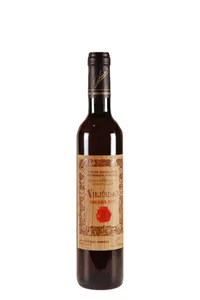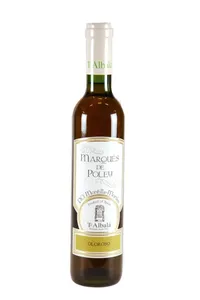Free delivery from Fr. 300 of purchase or 18 bottles, otherwise Fr. 15
Spain
Largest country in terms of surface area, with nearly a million hectares of vines in production, Spain can boast a very long winegrowing history, the main players of which were first the Phoenicians, then the Carthaginians, the Greeks and, finally, the Romans, who were to finish structuring the vineyard. The first, by founding Cadiz in 1104 BC, gave the impetus, contributing in particular to the beginning of the fame of Sherry wines.
After the Muslim conquests (early 8th century) and until the Reconquista (1492), vines continued to be present in much of the country. Five vintages are already attested: Seville, Granada, Lorca, Menorca and Málaga, which were prized by wine lovers who, moreover, had no difficulty in obtaining their favourite beverage, as the trade and consumption of wine were not forbidden to Christians and Jews. Even during the Almohad period, which was supposed to be a period of strict prohibition, the Muslim elites continued to practice a way of life inherited from the Umayyad caliphate. There is every reason to believe that wine was also part of this: 'One drinks, in the ḫāṣṣa, out of social convention, one drinks out of aestheticism, one drinks so that intoxication (and not inebriation) will open the heart and loosen the mind. We drink to speak better, to love better, to offer ourselves better to music. To be better in oneself and better with others." (François Clément, Manners of drinking and the sociability of wine in Andalus).
From the beginning of the modern era, in the 15th century and until the phylloxera crisis, the Hispanic vineyard was to undergo a continuous expansion intended for the production of wines that sometimes travelled around the world, such as the large quantity of sherry wines that Magellan embarked in 1519 on his five ships to complete the circumnavigation. The cost of these barrels of sherry was greater than the budget for arming his soldiers. After the misfortune suffered by the great navigator (killed on the island of Mactan in the Philippines), one may wonder whether the opposite would not have been preferable?
The important development that Spain underwent in the 19th century was to be accompanied by a major overhaul of the vineyards and to orient certain regions, such as Rioja, towards the production of quality wines. In imitation of the Bordeaux model for the Marquis of Riscal or, in a more identity-oriented way for Rioja, for the Marquis of Murrietta. It was also during this period that Don Eloy Lecandan y Chaves bought an estate in 1848. This estate was located in the heart of the Ribera del Duero and belonged to the Marquis of Valbuena, who was experiencing economic difficulties. The estate would soon become famous under the name of Vega Sicilia and, even today, it remains one of the emblems of great Spanish wines.
Following in the footsteps of the pioneers, Spain underwent a new wine muse in the early 1980s and many appellations experienced a real craze and deserved recognition on the international scene. Robert Parker's infatuation with Spanish wines is no stranger to this.
Of course, one can only be delighted by this race for quality, which is most of the time accompanied by a noticeable change in style: the wines gain in freshness of expression and balance; moreover, the American oakiness fortunately tends to lose some ground.
Located south of the Cantabrian Mountains, in the Ebro and Oja valleys, Rioja is one of the main wine regions, although in terms of surface area it comes a long way behind La Mancha. It is the best known region, although production is quite heterogeneous. There are three groups: Rioja Alta, which is slightly higher in altitude (400 to 500 m), Rioja Alavesa and Rioja Baja, the warmest. In terms of grape varieties, Tempranillo reigns supreme, complemented by Grenache, Mazuelo (Carignan) and Graciano.
With a surface area of just over 12,000 ha, Ribera del Duero is an aristocratic appellation that owes much to the aforementioned Vega Sicilia. Tempranillo is also in the majority here, followed by Grenache as well as Cabernet and Merlot. Compared to its prestigious predecessors, its surface area is tiny and its reputation very recent, yet the Priorat appellation (1,000 ha), located southwest of Barcelona in Catalonia, shows tremendous potential. Carignan and Grenache are the traditional grape varieties here, complemented by new plantings of Cabernet and Syrah among some producers.
Among the leading regions of Spain, in addition to the great Andalusian appellations, we should also mention the Penedès region, the Jumilla region, east of Alicante, where Mourvèdre expresses itself marvellously, the Bierzo, as well as the Ribeira Sacra and Rias Baixas regions, great terroirs for white wines in Galicia. Not forgetting Priorat which, despite its small size, has some of the greatest red wines in Spain. A real qualitative revolution took place here at the beginning of the 1980s: under the impetus of a few visionary winegrowers (including René Barbier and Alvaro Palacios), the Priorat vineyard, which was probably initiated in the 12th century by the monks of the Cartoixa de Scala Dei, literally rose from its ashes... Today, despite the numerous recent plantings, the Priorat vineyard still includes a significant percentage of very old vines planted on the typical terroir of the appellation, the llicorella, resulting from the disintegration of slate, mainly from the Devonian and Carboniferous periods (between 400 and 300 million years ago). A word must also be said about the unique beauty of this region, which in its extended area also includes Montsant and Siurana.
Andalusia: Jerez,
Montilla-Moriles and Malaga
The Jerez vineyard is located in Andalusia, in the south of Spain, between Jerez de la Frontera, Sanlùcar de Barrameda and El Puerto de Santa Maria and benefits from a very old fame.
The Montilla-Moriles appellation - which gave its name to the Amontillado - has long been associated with the wines of Jerez, from which it is nevertheless distinct, thanks in particular to the high natural alcohol content of its wines. It is located south of Cordoba and covers an area of approximately 13,000 ha.
Thanks to its particular subsoil of marl with high water retention capacity, the vineyards of Jerez do not suffer too much from the drought that prevails in this region. Some of the famous chalk, albariza, is found in Montilla-Moriles, as well as a mixture of red sands with some clay and limestone. The best areas (Alberos) are similar to those in Jerez. The vineyard can be divided into 2 zones: Montilla Sierra and Morilles Altoa with a more pronounced character.
Three grape varieties are allowed for the production of sherry, but today it is the palomino that is mainly used. The other two varieties, white pedro ximénez - a variety of Montilla-Moriles - and moscatel are used in combination with palomino for the production of " Creams " and sweet dessert wines.
Once alcoholic and malolactic fermentations have been completed, a first type of classification intervenes in order to separate wines destined for organic maturation marked by the intervention of the flor (the veil) and wines destined for oxidative type maturation.
This first classification corresponds to two fundamentally different styles of sherry:
- The Fino (called Manzanilla in the Sanlúcar de Barrameda region) which are part of the crianza de flor.
- The Oloroso on which the flor does not intervene and which will benefit from a long oxidative type of aging according to the solera system.
After this first classification, these wines are then vinified (encabeziamento) according to their type. Thus, wines destined for an organic type of ageing should not exceed 15°, while those destined for an oxidative type of ageing will be vinified at 18° to prevent the development of the so-called "flor". Then begins the aging in American oak barrels in the crianza where the rows of barrels, the criaderas, are stored.
Other than the two previous categories, there is a sort of intermediate category. These are wines originally intended to produce Fino, but which due to a reduced flor content were separated, vinified again to reach 17°, and then underwent a two-year oxidative type of ageing. After this period of ageing, the finest of these wines will give the Amontillados and the full-bodied ones the Palo Cortado.
The emblematic grape variety of Montilla-Moriles is Pedro Ximénez (PX). The very hot continental climate here induces the earliest harvests in Spain (around mid-August). The majority of the production is devoted to Fino, which easily rivals that of Jerez. The PX has a very high sugar content and does not need to be fortified at Montilla-Moriles for this type of wine. Amontillado and Oloroso, on the other hand, are lightly fortified. Finally, the other jewel in the crown of Montilla-Moriles production is the great sweet wines produced from PX that are aged on the ground for about ten days after the harvest. The very hot and dry climate of the region favours a natural desiccation conducive to the production of great vinos generosos. From then on, time only has to do its work and the tasting of a high quality PX Reserva and Gran Reserva remains an unforgettable taste experience.
96 items

Amontillado, Marques de Poley Solera 35 anos, Toro Albala (50 cl)
Montilla-Moriles

Xérès Fino Inocente, Valdespino
Xeres

Xérès Manzanilla Deliciosa, Valdespino
Manzanilla

Xérès Manzanilla Deliciosa, Valdespino (37.5 cl)
Manzanilla

Xérès Cream Isabela, Valdespino
Xeres

Montilla-Moriles, Don PX Convento Seleccion, Toro Albala - 1946
Montilla-Moriles

Amontillado Seleccion, Marques de Poley, Toro Albala - 1951
Montilla-Moriles

Oloroso Viejo, Marques de Poley, Toro Albala (50 cl)
Montilla-Moriles

Caisse Toro Albala 3 bts (Amontillado 51, PX 55 & 65)
Montilla-Moriles

Montilla-Moriles, Don PX Convento Seleccion, Toro Albala - 1955
Montilla-Moriles

Montilla-Moriles, Don PX Convento Seleccion, Toro Albala - 1968
Montilla-Moriles

Montilla-Moriles, Don PX Convento Seleccion, Toro Albala - 1931
Montilla-Moriles
